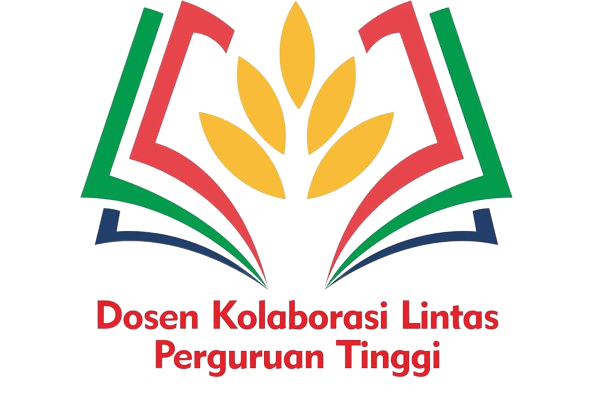Rajamangsa Mantyasih: Reconstruction of Royal Cultural Heritage as an Attraction of Gunungsari Tourist Village
DOI:
https://doi.org/10.69812/itj.v2i2.133Keywords:
Rajamangsa Mantyasih, Royal Culinary Culture, Gunungsari Tourism VillageAbstract
Rajamangsa Mantyasih, a royal culinary heritage from the ancient Mataram Kingdom, is being reconstructed as a cultural attraction in Gunungsari Tourism Village, Madiun Regency, to strengthen local identity and enhance cultural-based tourism development. The purpose of this research is to explore how the historical narrative of Rajamangsa Mantyasih can be reconstructed and adapted in contemporary contexts to serve as an authentic, educational, and marketable tourism product. This study employed a descriptive qualitative approach using field observations, participatory documentation, and semi-structured interviews with cultural practitioners, community members, and tourism managers. Findings reveal that the reconstruction process integrates historical narratives from the Mantyasih Inscription with adaptive culinary practices, substituting rare ingredients with locally available resources while maintaining symbolic values. The reconstructed Rajamangsa Mantyasih is developed into two main attraction formats: the Buffet Meeting Package and the Cooking Class Package, both of which emphasize participatory and educational tourism experiences. Community involvement plays a central role, with local residents contributing knowledge, resources, and management in ways that strengthen cultural preservation and stimulate economic activities through MSMEs. The study concludes that Rajamangsa Mantyasih not only preserves historical values but also creates a sustainable cultural tourism model that promotes heritage appreciation, strengthens local identity, and contributes to community empowerment. This model offers a replicable approach for other tourism villages seeking to leverage cultural heritage as a foundation for sustainable tourism innovation.
Downloads
References
Alkadri, M. F., Yuliana, Y., Agung, M. R. C., Rahman, M. A., & Hein, C. (2024). Enhancing preservation: Addressing humidity challenges in Indonesian heritage buildings through advanced detection methods point cloud data. Results in Engineering, 24, 103292. https://doi.org/10.1016/J.RINENG.2024.103292
Amalia, E., & Lubis, A. L. (2024). Remarkable journey on sustainable tourism destinations; case study on Bintan resort’s award winning on sustainable tourism destination. Indonesian Tourism Journal, 1(3), 217–230. https://doi.org/10.69812/ITJ.V1I3.75
Ansori, C., Warmada, I. W., Setiawan, N. I., Jogaswara, H., & Fariji, M. Al. (2024). The linkage of geological parameters to cultural diversity at Karangsambung-Karangbolong Geopark and surrounding area, Kebumen, Indonesia. International Journal of Geoheritage and Parks, 12(1), 168–179. https://doi.org/10.1016/J.IJGEOP.2024.02.002
Basaib, M. (2023). Sustainable development of the ocean: UN supports inclusive development of Indonesia’s National Blue Economy Roadmap. United Nations Indonesia. https://indonesia.un.org/en/238833-sustainable-development-ocean-un-supports-inclusive-development-indonesia%E2%80%99s-national-blue?utm_source
Bowen, G. A. (2009). Document analysis as a qualitative research method. Qualitative Research Journal, 9(2), 27–40. https://doi.org/10.3316/QRJ0902027/FULL/XML
Chen, X., Xie, W., & Li, H. (2020). The spatial evolution process, characteristics and driving factors of traditional villages from the perspective of the cultural ecosystem: A case study of Chengkan Village. Habitat International, 104. https://doi.org/10.1016/j.habitatint.2020.102250
Choirunnisa, I., & Karmilah, M. (2022). Strategi Pengembangan Budaya. Jurnal Kajian Ruang, 2(1), 89–109. https://doi.org/10.30659/JKR.V2I1.20446
Clark, A. M. (1998). The qualitative-quantitative debate: moving from positivism and confrontation to post-positivism and reconciliation. J Adv Nurs, 27(6), 1242–1249.
Decrop, A. (1999). Triangulation in qualitative tourism research. Tourism Management, 20(1), 157–161. https://doi.org/10.1016/S0261-5177(98)00102-2
Deviana, N. K., Misri, M., Putra, I. P. A. P., Putra, P. G. W. M., & Sapitri, H. (2024). Branding strategy for the tourism attraction potential of Pura Pengelukatan Tirta Sudamala Wanagiri Buleleng. Indonesian Tourism Journal, 1(3), 231–243. https://doi.org/10.69812/ITJ.V1I3.76
Fitri, I., Ahmad, Y., & Ahmad, F. (2015). Conservation of Tangible Cultural Heritage in Indonesia: A Review Current National Criteria for Assessing Heritage Value. Procedia - Social and Behavioral Sciences, 184, 71–78. https://doi.org/10.1016/J.SBSPRO.2015.05.055
Gao, J., & Wu, B. (2017). Revitalizing traditional villages through rural tourism: A case study of Yuanjia Village, Shaanxi Province, China. Tourism Management, 63, 223–233. https://doi.org/10.1016/j.tourman.2017.04.003
Ikaputra, I., & Widyastuti, D. T. (2025). Marginalized Modern Architectural Heritage in Indonesia: The case of transformator huisje (gardu listrik) architecture of the Nederlandsche Indisch era. Frontiers of Architectural Research, 14(3), 596–613. https://doi.org/10.1016/J.FOAR.2024.10.005
Jones, T. (2018). International intangible cultural heritage policy in the neighbourhood: an assessment and case study of Indonesia. Journal of Cultural Geography, 35(3), 362–387. https://doi.org/10.1080/08873631.2018.1429351
Kismartini, K., Roziqin, A., & Authori, N. (2023). A stakeholder analysis for sustainable development of Maritime Village in Semarang coastal community, Indonesia. Public Administration and Policy, 26(3), 321–334. https://doi.org/10.1108/PAP-10-2022-0119
Kuchiki, A. (2022). Linking spatial economics and sequencing economics for the Osaka tourism agglomeration. Regional Science Policy and Practice, 14(3), 610–626. https://doi.org/10.1111/rsp3.12476
Mahaswa, R. K., & Syaja, A. (2025). Questioning local wisdom in Indonesian Indigenous research. Studies in History and Philosophy of Science, 112, 170–178. https://doi.org/10.1016/J.SHPSA.2025.07.001
Marzoan, L. D., & Murianto, M. (2023). Pengembangan Desa Wisata Berbasis Budaya Di Desa Ketara Kecamatan Pujut Kabupaten Lombok Tengah. Journal of Responsible Tourism, 3(1), 1–14. https://doi.org/10.47492/JRT.V3I1.2713
Pickel-Chevalier, S., Bendesa, I. K. G., & Darma Putra, I. N. (2021). The integrated touristic villages: an Indonesian model of sustainable tourism? Tourism Geographies, 23(3), 623–647. https://doi.org/10.1080/14616688.2019.1600006
Polkinghorne, M., Pearson, N., van Duivenvoorde, W., Nayati, W., Tahir, Z., Ridwan, N. N. H., Forrest, C., Tan, N. H., Popelka-Filcoff, R., Morton, C., Kowlessar, J., & Staniforth, M. (2024). Reuniting orphaned cargoes: Recovering cultural knowledge from salvaged and dispersed underwater cultural heritage in Southeast Asia. Marine Policy, 163, 106074. https://doi.org/10.1016/J.MARPOL.2024.106074
Priatmoko, S., Kabil, M., Purwoko, Y., & Dávid, L. D. (2021). Rethinking Sustainable Community-Based Tourism: A Villager’s Point of View and Case Study in Pampang Village, Indonesia. Sustainability, 13(6), 1–15. https://ideas.repec.org/a/gam/jsusta/v13y2021i6p3245-d517603.html
Purwanti, S., Abdul Wakhid, A., . A. Q., & Wulansari, A. (2023). The Policy of Village Heads in Building Religious Tolerance in Kertosari Village. KnE Social Sciences. https://doi.org/10.18502/KSS.V8I16.14073
Richards, G. (2018). Cultural tourism: A review of recent research and trends. Journal of Hospitality and Tourism Management, 36, 12–21. https://doi.org/10.1016/J.JHTM.2018.03.005
Rohaeli, O. R., Damayanti, S. P., & Wahyuningsih, S. (2025). Peran Pokdarwis Dalam Pengembangan Daya Tarik Wisata Berbasis CBT (Community Based Tourism) Di Wisata Alam Gunung Jae. Journal of Responsible Tourism, 4(3), 773–780. https://doi.org/10.47492/JRT.V4I3.3772
Sabiq, A. F. (2024). Salatiga Cassava tourism development strategy. Indonesian Tourism Journal, 1(1), 70–81. https://doi.org/10.69812/ITJ.V1I1.20
Sofiani, S., Yulius, K. G., & Hardjasa, G. E. (2024). Analisis Potensi Wisata Budaya Desa Wisata Besani, Gerbang Akulturasi Jawa-Tiongkok di Kabupaten Batang. JIIP - Jurnal Ilmiah Ilmu Pendidikan, 7(6), 5651–5657. https://doi.org/10.54371/JIIP.V7I6.4458
Song, H., Chen, J., & Li, P. (2025). Decoding the cultural heritage tourism landscape and visitor crowding behavior from the multidimensional embodied perspective: Insights from Chinese classical gardens. Tourism Management, 110. https://doi.org/10.1016/j.tourman.2025.105180
Soszyński, D., Sowińska-Świerkosz, B., Stokowski, P. A., & Tucki, A. (2018). Spatial arrangements of tourist villages: implications for the integration of residents and tourists. Tourism Geographies, 20(5), 770–790. https://doi.org/10.1080/14616688.2017.1387808
Swandayani, A. (1989). Makanan dan minuman dalam masyarakat Jawa kuno abad 9-10 M : suatu kajian berdasarkan sumber prasasti dan naskah [Universitas Indonesia Library]. https://lib.ui.ac.id
Wahyuni, I., Prihatiningtyas, W., Djatmiati, T. S., Sujatmoko, E., Winarsi, S., & Ramli, L. (2023). Pemberdayaan Masyarakat melalui Pemilahan Sampah dalam Rangka Optimalisasi Desa Wisata Edukasi Lingkungan di Desa Gunungsari Madiun. VSJ | Veteran Society : Jurnal Pengabdian Masyarakat , 4(1), 21–38. https://doi.org/10.33005/VSJ.V4I1.103
Wisudawati, N. N. S., & Maheswari, A. A. I. A. (2018). Potential of Silver Craft Product through to Community-Based for Tourism Sustainability in Celuk Village. International Research Journal of Management, IT and Social Sciences, 5(1), 9–15. https://sloap.org/journals/index.php/irjmis/article/view/25
Downloads
Published
How to Cite
Issue
Section
License
Copyright (c) 2025 Arya Budi Priambodo, Nafrida Imliyatul Faizah, Bernardi S Dangin, Cristina Hoyos Perez

This work is licensed under a Creative Commons Attribution-ShareAlike 4.0 International License.
You are free to:
- Share — copy and redistribute the material in any medium or format for any purpose, even commercially.
- Adapt — remix, transform, and build upon the material for any purpose, even commercially.
- The licensor cannot revoke these freedoms as long as you follow the license terms.
Under the following terms:
- Attribution — You must give appropriate credit, provide a link to the license, and indicate if changes were made . You may do so in any reasonable manner, but not in any way that suggests the licensor endorses you or your use.
- ShareAlike — If you remix, transform, or build upon the material, you must distribute your contributions under the same license as the original.
- No additional restrictions — You may not apply legal terms or technological measures that legally restrict others from doing anything the license permits.















